True Stereo
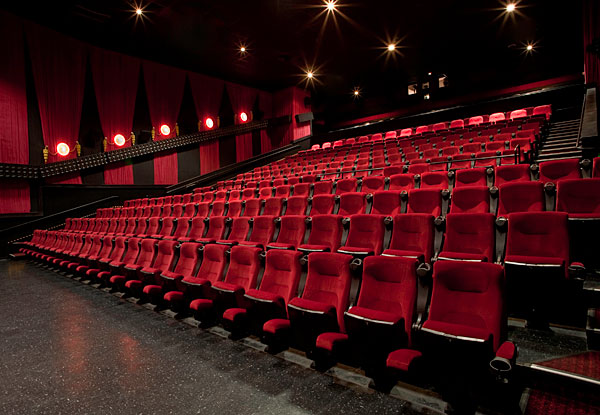
Most consumers would probably apply the word "stereo" exclusively to 2-channel audio systems. So you might be surprised to learn that "stereo" has nothing to do with the number 2 per seit derives from the Greek word for "solid." The word was applied to 2-channel sound systems when they first became available because those systems rendered a much more "solid" sonic image with more specific placement of individual elements (instruments, voices, etc.) than the monaural systems that had preceded them. Similarly, 5.1 surround systems are far more "stereo" than 2-channel systems.
A company called Iosono is extending this concept much farther. Designed primarily for commercial cinema and other public-venue applications, the Iosono (pronounced EE-oh-so-no) system places literally hundreds of individually addressable speaker drivers around a room, forming a continuous line that completely encircles the audience.
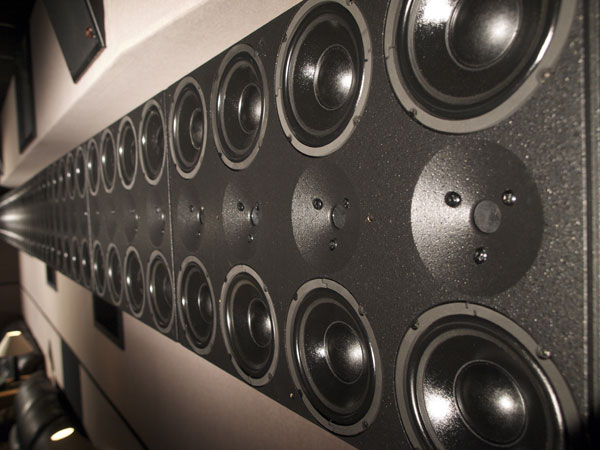
The drivers include 1-inch dome tweeters and 6-inch midrange cones mounted in rectangular panels. Each channel of audio information is reproduced by one tweeter and two midranges in a 2-way configuration powered by two 100W Class D amps, and four such sets of drivers and ampsproducing a total of 800Ware mounted in each panel. (The panels intended to be placed behind a perforated screen have small compression horns instead of dome tweeters, and the amp power for each channel is doubled.) Several powered subwoofers are also placed around the room to handle the low frequencies.
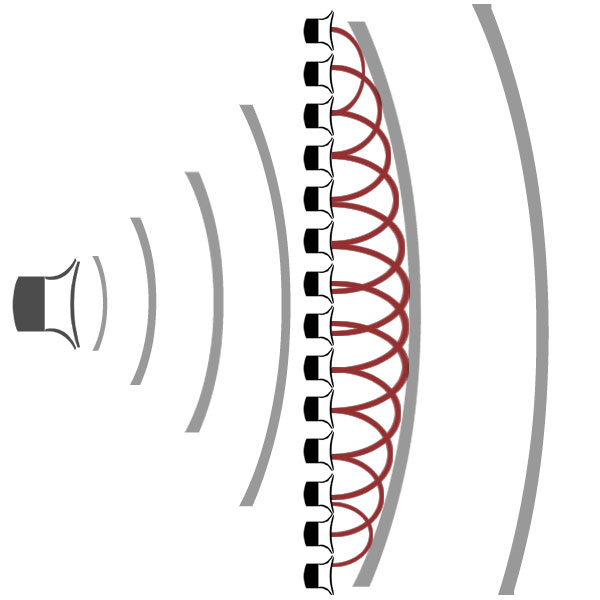
The Iosono system utilizes Wave Field Synthesis (WFS) technology. WFS is based on the work of 17th-century Dutch mathematician and astronomer Christiaan Huygens, who proposed that the wave field of a single source can be accurately emulated by many closely spaced sources located on the perimeter of the original wave field as shown in the diagram above. Thus, any virtual sound source can be realistically reproduced by an array of actual sound sources, such as the drivers in the Iosono panels.
Sounds to be reproduced by Iosono can come from any playback system, such as Pro Tools. Each input is encoded with localization coordinates for that source, along with other metadata. Also encoded is information about the physical configuration of the speaker array and the room in which it is installed.
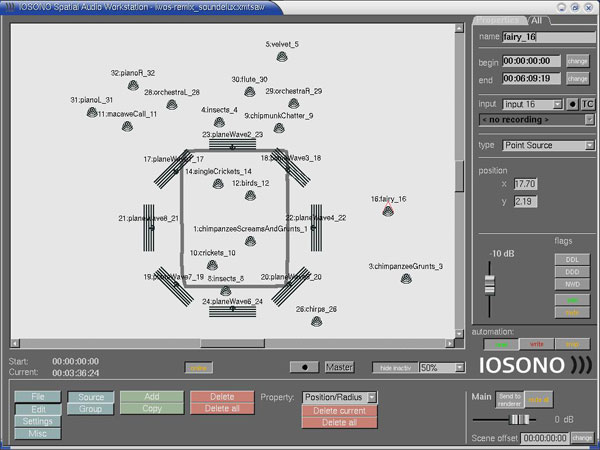
WFS algorithms render signals for the speaker arrays in real time to simulate the sound of the original sources at the designated coordinates. This involves much more than simple amplitude panningcomplex changes in a signal's phase, delay, and spectrum are also important components of the process. The software allows a mixing engineer to control the position and movement of each sound source graphically on the screen as shown in the screen shot above. Using multiple computers, the current theatrical system has enough horsepower to render up to 32 separate sound sources in this manner.
I attended a demonstration of the Iosono system at Todd-AO in Los Angeles a few years ago. That system included 304 channels and eight subwoofers, all fed by eight rendering PCs. The demo material included specially produced clips with many sound sources moving around and a single-source "whispering ghost" that attendees could move around the room with an electronic pen and tablet.
The effect was quite startling and much more natural sounding than even 5.1 systems, in which the sweet spot is often relatively small. In this demo, the sweet spot essentially encompassed the entire room, and the sonic image remained completely stable no matter how I turned my head. Even the apparent distance from each source was clearly evident.
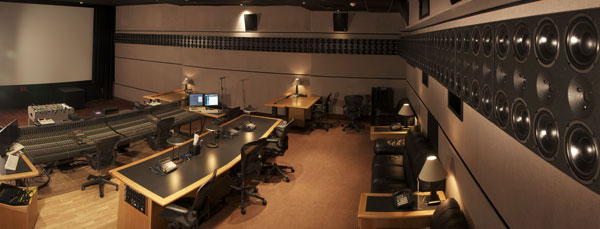
Iosono recently completed two more installationsone at Todd-AO (pictured above) and the other at Mann's Chinese Theater in Hollywood (shown at the top of this blog). The Todd-AO system includes four rendering PCs and 224 channels powered by a total of 44,800 watts, while the Chinese Theater provides six rendering PCs and 376 channels powered by 99,200W. I look forward to checking out these new systems, but even the earlier prototype I heard was one of the best holographic sound demos I've ever experienced, expanding the soundfield well beyond the physical boundaries of the room and allowing pinpoint localization of all virtual sourcesthe true epitome of stereo audio reproduction.
- Log in or register to post comments
























































